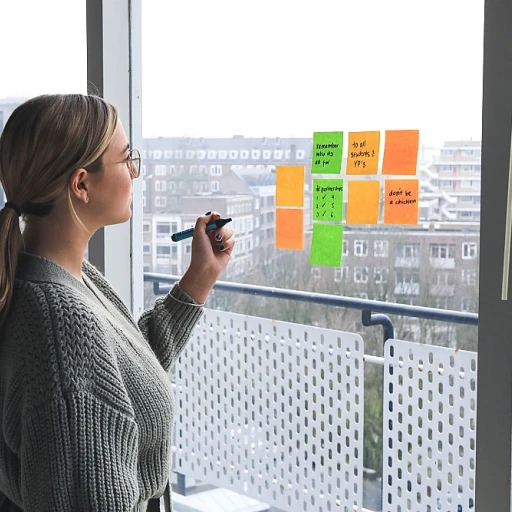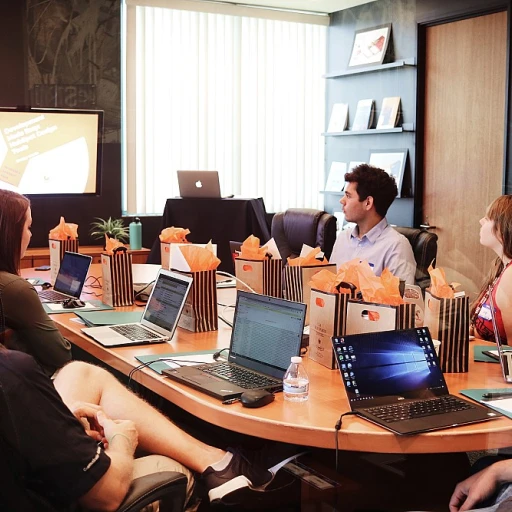-teaser.webp)
Understanding Workforce Planning
Building a Holistic Understanding of Workforce Dynamics
Workforce planning is a crucial aspect for industries aiming to keep pace with evolving economic landscapes. It encompasses strategic initiatives that align workforce capabilities with business objectives, ensuring that a company can meet future demands efficiently. The pursuit of such alignment often underscores the importance of training, especially for individuals pursuing graduation and those embedded within technical education systems. In many regions, particularly in India, there's an emphasis on enhancing employability through structured national missions. Programs like the NEEM scheme and the efforts of the India Council offer structured pathways for students and fresh graduates to gain employability enhancement through job training and practical training experiences. Trainees introduced to real-world challenges through government-endorsed initiatives, such as NEEM training, can significantly enhance their skills. This training is not just about technical know-how but also includes the soft skills necessary for successful integration into the workforce. The role of a NEEM facilitator becomes instrumental in bridging the gap between theoretical education and practical industry applications. Industries are increasingly collaborating with educational institutions and technical councils to craft bespoke job training schemes. These collaborations are designed to prepare students as industry-ready professionals, offering them a seamless transition from academia to industry roles. The impact of these initiatives isn't confined to individual companies alone but is also a mission to boost the national workforce's capability. Moreover, as businesses navigate complex workforce dynamics, understanding global mobility and addressing underutilized workers become critical. For additional insights on these challenges, explore this comprehensive analysis on underutilized workers. Employability enhancement missions are pivotal in laying the groundwork for a sustainable labor market that can adapt and thrive amidst shifting industrial demands.The Role of National Initiatives
Impact of Government Initiatives on Workforce Development
National initiatives play a critical role in developing a robust framework for workforce planning. These initiatives, spearheaded by government bodies, aim to elevate the employability of students and trainees by equipping them with essential skills through various schemes. In India, initiatives like the National Employability Enhancement Mission (NEEM) are pivotal in bridging the gap between the educational qualifications of students and the demands of the industry. The NEEM scheme is specifically designed to enhance employability by providing practical training akin to technical education and bridging the university-to-industry divide. This mission facilitates training that aligns with the current industry standards, ensuring that trainees are not only theoretically proficient but also vocationally prepared to meet market needs. Government-backed programs are vital in enhancing employability by forming collaborations with industries to craft skill-specific training modules. These efforts often involve redesigning job training and practical training modules with the guidance of industry experts and educators from councils dedicated to technical advancements. Additionally, strategic schemes like the Neem Trainee Program target students pursuing graduation, offering them hands-on experiences and insights into industry functioning. Such interactions foster a deeper understanding of job requirements, empowering trainees with the necessary competencies for successful integration into the workforce. The involvement of India’s councils and government sectors underlines the importance of cross-sectional collaboration, where education meets technical requirements, and the job market benefits from skillful entrants. These national endeavors underscore a commitment to not only sustaining but enhancing employability by equipping the emerging workforce with advanced, industry-relevant skills, significantly improving employment outcomes. For more insights, you can explore the challenges faced by underutilized workers, illustrating the depth of workforce planning hurdles and opportunities.Challenges in Workforce Planning
Addressing Key Workforce Planning Hurdles
Workforce planning is a complex process that involves multiple stakeholders, including the government, industries, educational institutions, and trainees. One of the crucial challenges in this area is aligning educational outcomes with industry requirements. Although many students are pursuing graduation with technical education, there remains a gap between what is taught in classrooms and the skills demanded by employers. This misalignment results in underutilization of government resources and disappointing employability enhancement results. Furthermore, practical training opportunities like the NEEM (National Employability Enhancement Mission) scheme, which aims to enhance employability through job training and job practical exposure, can sometimes struggle to fulfill their potential due to inadequate industry engagement and support.
Moreover, the lack of a cohesive national strategy can also stymie workforce planning efforts. Schemes such as NEEM facilitate crucial employability pathways by designating a NEEM facilitator who bridges the gap between industry and trainees. However, without a unified mission and alignment with companies and industries, these schemes experience varying levels of success. Industries must collaborate closely with educational councils, like the India Council, to craft initiatives that cater to both technical and non-technical education sectors. Engaging with these stakeholders in a meaningful way is essential for creating actionable outcomes, such as enhancing employability, fortifying job readiness, and supporting national missions.
Consistency in the implementation of workforce planning initiatives also poses significant challenges. Many programs operate in silos, leading to inefficiencies and duplication of efforts. Streamlining processes and creating an integrated approach involving all entities—students, government bodies, educational institutions, and industries—will create a more resilient workforce planning framework. Addressing these hurdles collectively will lay a solid foundation for successful execution of national initiatives and improve employability skills for future job markets. For more insights on crafting effective development programs, consider exploring career development programs in corporations.
Strategies for Enhancing Employability
Empowering the Workforce with Effective Strategies
Enhancing employability is a multi-faceted strategy that requires cohesive efforts from various sectors, including government, industry, and educational institutions. Here's how these entities contribute to boosting employability:- Skill Development Schemes: Government initiatives, such as the NEEM Scheme (National Employability Enhancement Mission), play a pivotal role in bridging the skill gap. NEEM trainees, under this scheme, receive practical training that aligns with industry standards, making them job-ready.
- Internships and Job Training: Practical job training in companies allows trainees to apply their technical education in real-world settings, enhancing their skills further. Such training programs are crucial for those pursuing graduation or technical education, providing them relevant work experiences before they formally enter the job market.
- Public-Private Partnerships: Collaboration between national bodies and private firms underpins the success of many employability enhancement programs. These partnerships often result in tailor-made job training schemes that meet the unique demands of various sectors, from technology to manufacturing.
- Technical Education and Vocational Training: With the involvement of the India Council and other technical education authorities, a focus on vocational training helps to prepare students for specific career paths. This approach ensures that education curricula remain relevant to current industry needs.
- Continuous Learning Opportunities: In today's fast-evolving job market, the impetus on lifelong learning is critical. National initiatives emphasize re-skilling and up-skilling, ensuring that the workforce can adapt to new roles and technological advancements.
Case Studies of Successful Missions
Illustrative Examples of Achievements
One of the cornerstones of successful workforce planning has been the execution of various national initiatives. Across different countries, these initiatives have set benchmarks for enhancing employability, providing valuable insights for others. Let’s explore some of these successful missions, taking into account the practicalities, challenges, and triumphs.
National Employability Enhancement Mission (NEEM) in India
The NEEM scheme in India stands out as an exemplary model. Spearheaded by the government, this program aims to empower students pursuing graduation with practical job training and industry exposure. NEEM trainees undergo hands-on sessions that bridge the gap between academic learning and industry demands. Over the years, India has seen a significant increase in job readiness among graduates, thanks to the mission NEEM scheme. This initiative exemplifies a dual approach—facilitating technical education and providing valuable industry experience, thereby ensuring trainees are equipped with essential skills for the job market.
Collaborations Between Government and Industry
In addition to governmental schemes, collaboration between government entities and the private sector has been pivotal. For instance, councils focused on technical education join forces with companies to design curricula that meet industry needs. Such partnerships ensure a steady pipeline of skilled workers who are ready to tackle the ever-evolving challenges of the industry. These collaborations stand as testament to the practical training enhancements, where trainees acquire critical skills that significantly enhance their employability.
Empowering Students with Schemes and Training
Furthermore, employing specific job schemes to train students in various technical and non-technical domains has proven beneficial. Initiatives like these focus not only on skill development but also on cultural acclimation to work environments, an aspect often overlooked. Students receive training enhancement through well-structured programs, enabling them to thrive in diverse professional settings.
Every national mission shares the larger goal of creating a proficient workforce that can tackle global challenges. With government support and active participation from the industry, these strategies offer a coherent roadmap for other nations aiming to boost their employability rates.














